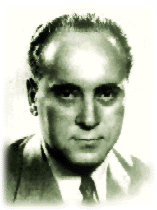|
LÁSZLÓ HELLER (1907 - 1980) |
 |
Born in Nagyvárad, Heller took a degree in mechanical engineering in 1931 at the Eidgenössische Technische Hochschule in Zürich. Then he worked as a research engineer at the same university, where he studied the special domain of statics. After returning home he specialized on problems of engineering industry and energetics. In the 1940s the first high-pressure industrial power station at Ajka was built according to his plans. At that time he worked out the world-famous Heller system which, based on the name of László Forgó, the active collaborator in the industrial implementation, known as the Heller - Forgó system. After World War II he founded Egart Rt which became known as Hőterv following the nationalization. Later it became the Institute of Energetics and developed into a well known office under his direction. Since 1951 he had been a professor at the Technical University of Budapest, where he organized the Department of Energetics. He actively participated in establishing the concept of entropy in engineering practice.
In 1954 he was elected a corresponding member, then in 1962 a full member of the Hungarian Academy of Sciences. In 1951 he was rewarded with the Kossuth Prize.
Heller - Forgó's cooling tower (1958)
The principle was worked by Heller and the plant was designed by Forgó. Their system solved an important problem at power stations by utilizing cooling water more efficiently. The main point of their invention was condensing the vacuum steam by injection of cool water. The still-warm water entered into the fine-gilled heat exchanger cooled down and became usable, again when the cycle repeated. This system is known and used all over the world.
